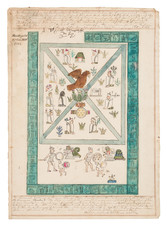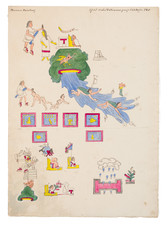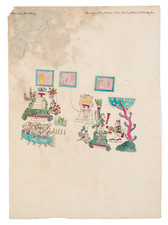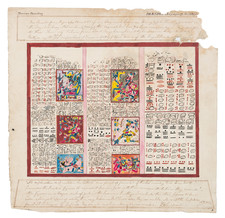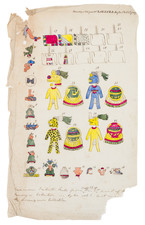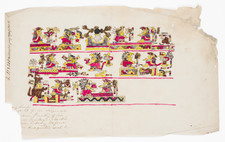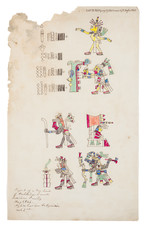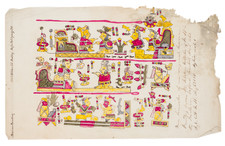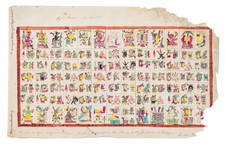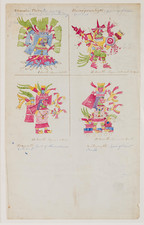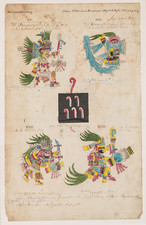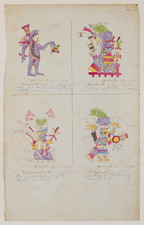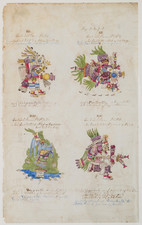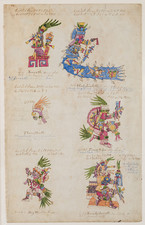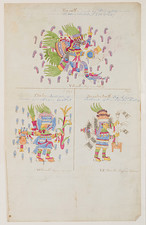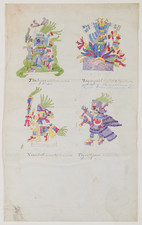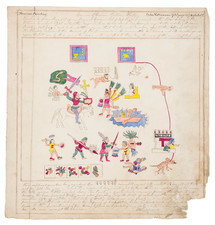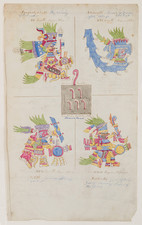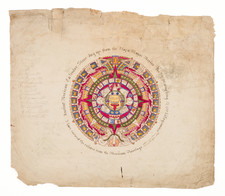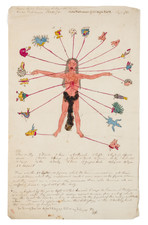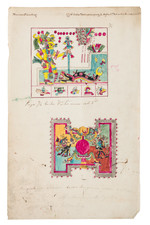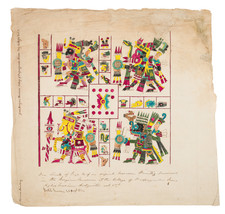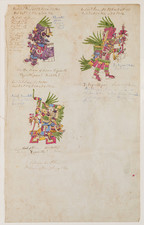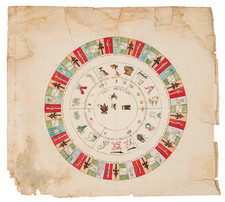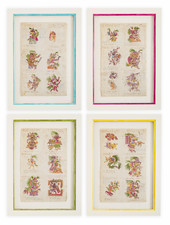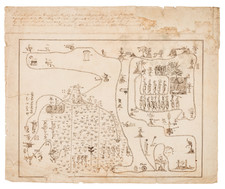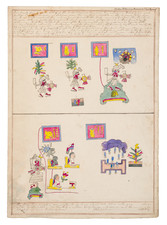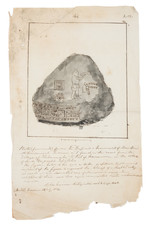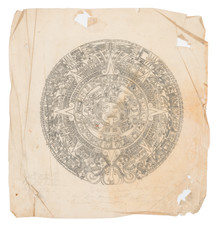Search
William H. Shippard (1803-1865) was a pioneering 19th-century British museologist - an unsung progenitor of modern-day museum anthropology. While he is chiefly remembered as a friend of George Catlin, Shippard's profound interest in the ancient civilizations of Mexico connects him with a cohort of British contemporaries that include Lord Kingsborough and the showman William Bullock. Shippard's fascination with Mesoamerica propelled him to amass a significant collection of visual material derived from Aztec codices which he copied himself. A figure of some intrigue and scholarly ambition, Shippard endeavored to establish the Museum of Mankind in London, which seems to have evolved from his deep interest in early Mexican cultures. Although the museum did not come to fruition, Shippard's original artwork, mainly pen and ink drawings enriched with vibrant hand coloring, based on Mexican codices held in European libraries and collections, remains a valuable historical source, particularly for understanding the allure of Mexican antiquity within early 19th-century British collecting circles.
Shippard's originals of "Mexican paintings" feature a remarkable array of visual motifs associated primarily with Mexica or Aztec culture. The majority of pieces are based on images from renowned Mexican codices such as the Codex Mendoza, the Codex Borgia, and Lord Kingsborough's massive multi-volume color-plate book on Mexican Antiquities. These drawings often bear annotations in Shippard's hand, providing insights into his interpretations and possible theories on the origins of Native American people. Shippard's annotations often reference the work of Agostino Aglio, the artist who collaborated on Kingsborough's book, thus highlighting a concentration of British interest in the study of Mexican antiquities.
Shippard's collection is not only a visual feast but also an intellectual treasure trove. His extensive marginalia reveal a deep engagement with the theories of his time, including occasional references to comparative studies of Native Americans.
Based on his interest in Mexico, Shippard would seem to fit into the milieu of British collectors keen on amassing and interpreting original manuscript codices from Mexico: we have already alluded to Lord Kingsborough and the showman William Bullock (whose Mexican exhibition in London's Egyptian Hall has been the subject of several scholarly studies). To this group of enthusiasts we might add two non-English figures: the Italian artist Agostino Aglio, and the French (or Czech) explorer and proto-archeologist Frédéric de Waldeck, both of whom worked on elaborate lithographic publications on Mexican antiquities. Whether Shippard planned his own illustrated publication is not known, but his beautifully rendered watercolors of Aztec manuscripts are certainly exquisite visual artifacts reflective of the burgeoning British interest in all things Mexican during the 1830s. By the 1840s the British Museum was only beginning to mount exhibitions that included Mexican antiquities - and it wasn't until the 1860s and 1870s "that major, distinctively Pre-Columbian exhibits got under way" - Elizabeth W. Williams, "Collecting and Exhibiting Pre-Columbiana in France and England, 1870-1930" [in:] Collecting the Pre-Columbian Past (1993).
George Catlin, the famous American painter of North American Indians, referred to Shippard's "beautifully illustrated lectures on the 'Arabians' and the 'Ruined Cities of America" - Catlin's Notes of Eight Years' Travels and Residence in Europe v. 1. It is likely that the watercolors of Mexican codices were made by Shippard as research for his museum project or as visual aids for his lectures.
Despite Shippard's early contributions to Mesoamerican studies, his efforts have been largely overlooked by scholars, partly due to the scarcity of accessible original source material. The present visual material, therefore, represents an unparalleled opportunity to explore the depth of 19th-century British interest in Mexican cultural objects. Shippard's Mexican work is a significant reflection of the intellectual pursuits and collecting practices that shaped British visual culture's engagement with Mesoamerica.
Shippard's visual production of Mexican or Aztec pictures sheds light on 1830s-1840s British interest in Mexican antiquities, while presenting source material concerning the evolving theories of British and European methodologies vis-a-vis indigenous American cultures.

